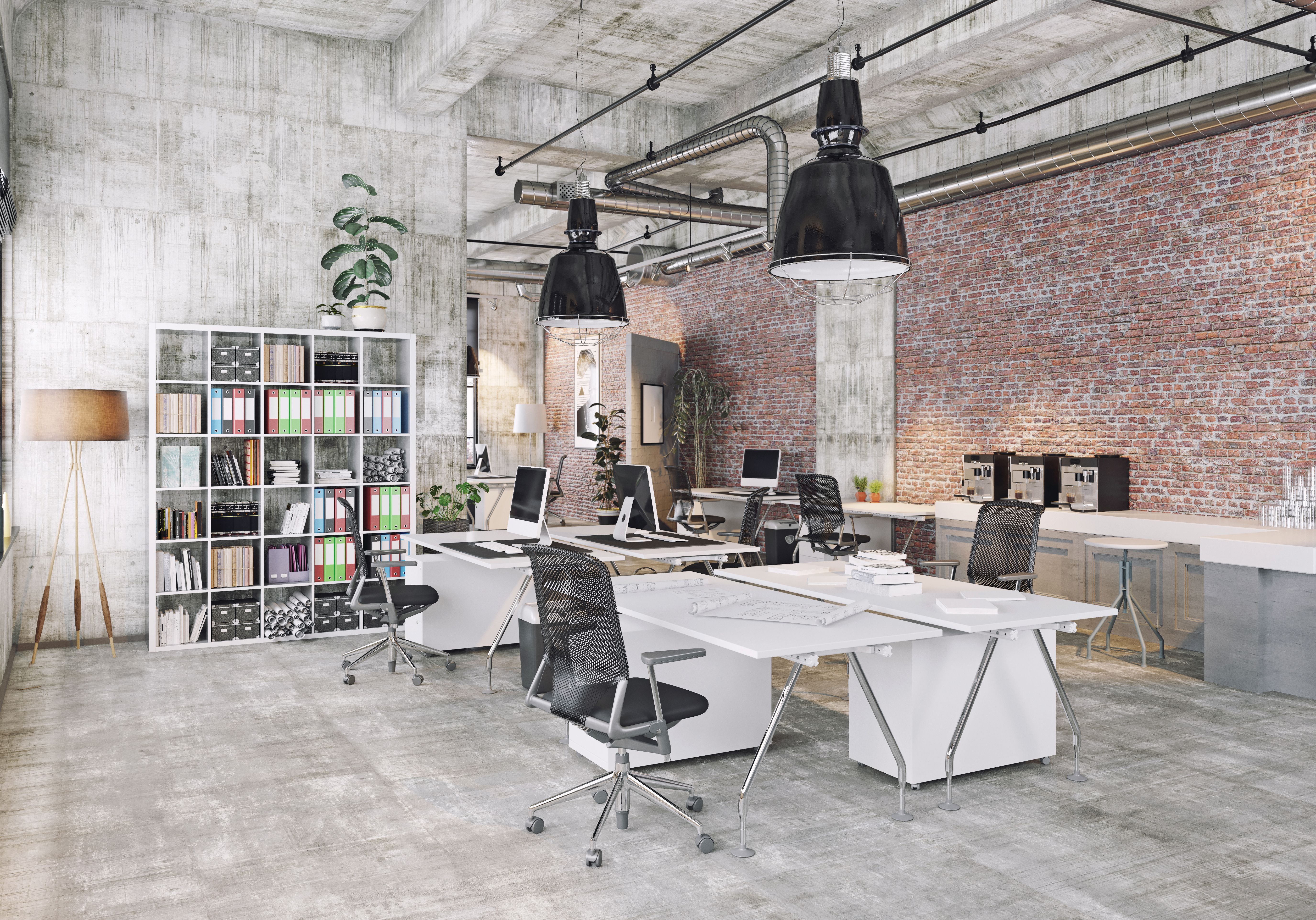Are You Ready for Resimercial?

First there was working in the company office. Then there was working in your home office. Then there was Starbucks and the rise of the “third space.” Now the three are merging in the growing trend of resimercial design. -–Work Design Magazine, February 2018 Issue
If your hometown is anything like mine, chances are you have a ton of new business developments going on around you. Office buildings are nothing new, but this time around there’s a big shift happening. Yesterday’s suburban corporate office parks drove workers home, giving rise the teleworking boom of the early 2000’s. Since the Great Recovery began in 2009, a new trend is emerging in warehouse districts, downtown areas, and suburban mixed-use developments as workers flock back to the office. Mix in the largest generation of young workers and voila!, witness the birth of a new design trend. Resimercial is exactly what it sounds like – a blend of residential amenities woven into office design. It is commercial combined with a home’s casual, comfortable aesthetic. Who better to help this new generation of office properties get their technology solutions in line than the residential CI channel?
Imagine a new type of client who uses your services only during normal business hours and isn’t going DIY anytime soon.
Let’s first take a look at the key characteristics of a resimercial office environment:
- Comfortable & Collaborative: Think open workspaces, opportunities for relaxation, playtime, and socialization. Many new resimercial offices have ping pong tables, beer taps, and large conference rooms.
- Open Floor Plans: In resimercial, dedicated offices take a backseat to huddle spaces, phone booths, family tables, and large gathering spaces.
- Meeting Spaces Rule: Good resimercial offices feature well-designed conference rooms and huddle spaces that offer up opportunities for face-to-face collaboration or virtual meetings.
You already understand residential custom installation inside and out. Your company is used to fielding calls from clients all hours of the day, with immediate response times expected. Imagine a new type of client who uses your services only during normal business hours and isn’t going DIY anytime soon. Does it sound too good to be true? Let’s look at a few key areas where your residential CI business could easily capitalize on the new resimercial trend. Like any good business idea, finding the pain points that your new commercial clients are experiencing is a good start. Here are a few to consider:
- BYOD: Employees are increasingly using devices like iPhones and iPads exclusively without needing traditional computers and laptops. Help your new business customers cater to their workers by leaning on your residential experience. Getting a small office online and managing their basic technology needs should be a walk in the park after managing the always-on needs of your high-net-worth clients and their families. If you’re uncomfortable with IT, partner with a local IT company and refer business back and forth.
- Echo Chambers: Open floor plans mean acoustic challenges that need to be proactively solved. Imagine becoming a trusted advisor to a local architecture or interior design firm by offering to help engineer the noise management and audio systems. Help write the specification, bid the job, and win the business!
- Easy Is HARD: If you’ve ever gone into a traditional conference room and tried to use the technology without some instruction first, you know what I mean. Imagine taking your residential experience into the conference room environment and leveraging control system platforms that deliver an intuitive user experience. “Don’t Make Me Think” should be the rule of thumb here, and you have a huge leg up on your commercial integrator counterparts who seem just fine with the status quo.
- Hide The Technology: You already know how to conceal technology into furniture while hiding cables and clutter. The resimercial movement is a perfect way to practice your artistry throughout the office using technologies such as art and mirror TVs, hidden screens, and projector lifts. Walk into any office building today to see what traditional commercial integrators are up to. It sure isn’t focusing on aesthetics and hidden installation.
- Workers Need WiFi: Just like your residential clients, workers need WiFi everywhere throughout the office. From the bar to the foosball table, there better not be any dead spots. Leverage your residential experience here by offering up design services to specifiers, ensuring 100 percent wall-to-wall coverage.
- Service & Support: Businesses expect to have their technology perform properly at all times. Failure to provide great service here could mean huge dollar losses for your clients. Consider offering 24/7 proactive support as part of your sales strategy by delivering it yourself or partnering with a remote managed services provider such as OneVision or Parasol [the author is a co-founder of Parasol].
If your residential CI business is looking for new streams of revenue to offset the Internet of Things DIY wave in the low and middle segments of the market, consider resimercial a sound business decision. Margins are a little lower than the residential world; instead of 40+ point selling margins, expect to see 35-37 points depending on what part of the country you’re in. Balance those margins with the size of the commercial market available and you’ll be able to cherry pick the best projects to augment your residential business. It’s easy to get started, and chances are many of your clients are business owners or C-level executives anyway. Why not tell them to “bring you to work”?
A daily selection of features, industry news, and analysis for AV/IT professionals. Sign up below.
Stay frosty and see you in the field.
